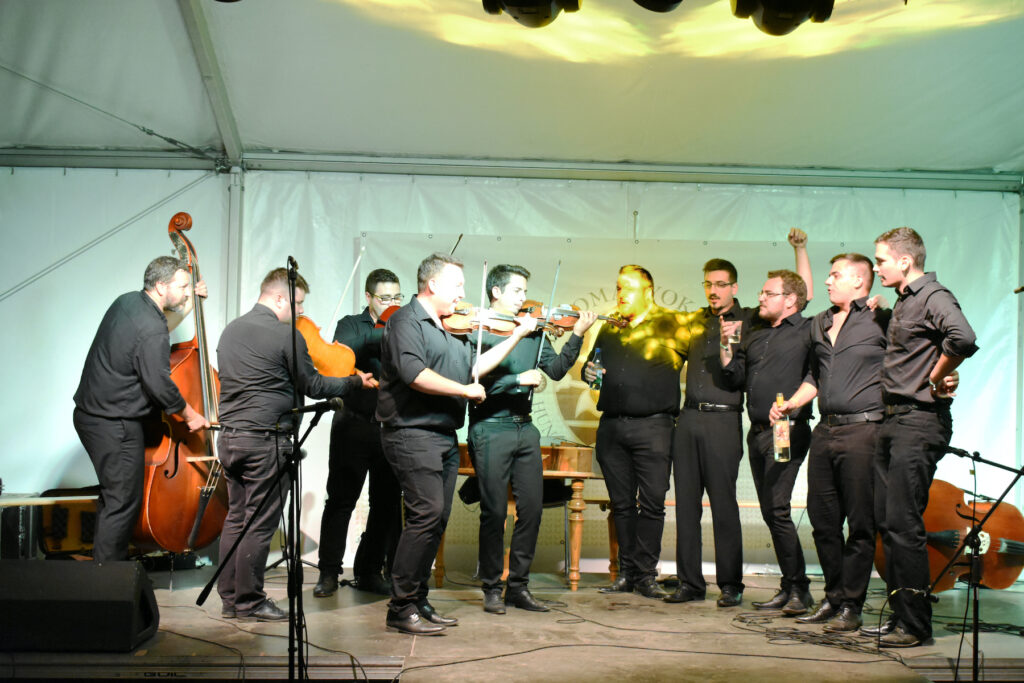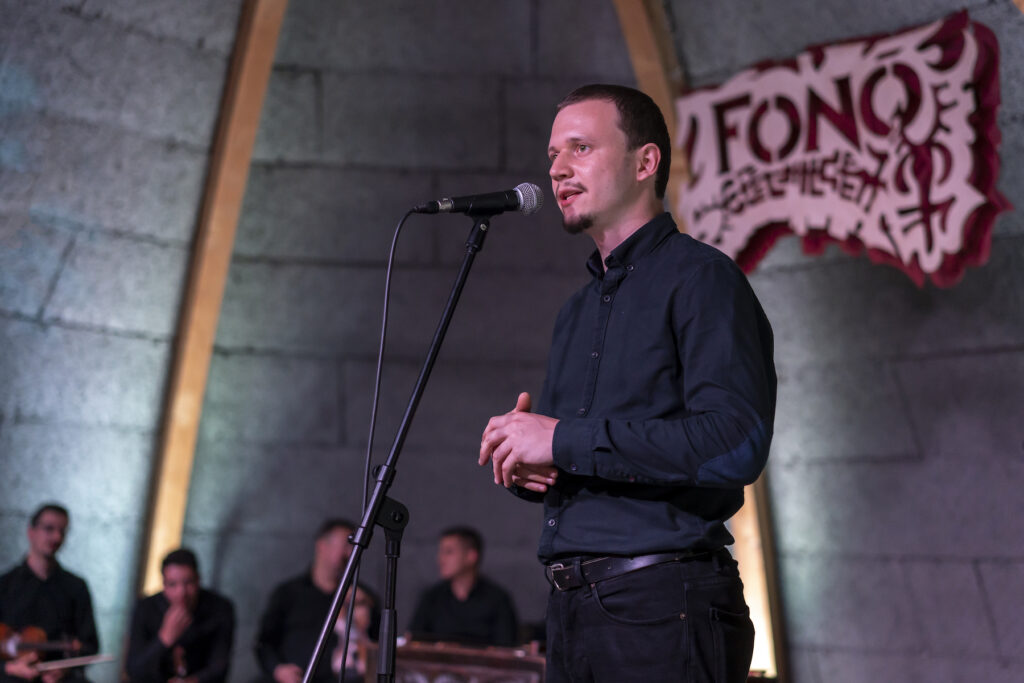There is a bench in Torockó/Rimetea that you must sit on because it evokes a very special, local feeling. It’s located in the main square of the settlement, and when you sit on it facing the proud Székelykő/Piatra Secuiului/the Szekler’s Rock, you get a quick feeling of what it means to be in this part of Transylvania. And if you add a festival into the mix, you get a firsthand experience of what it means to have fun in a stunning multicultural landscape.
If you look at the main program of festivals, you will find that it is mostly dominated by modern music, which makes Double Rise, organized at the feet of the Szekler’s Rock, a bit different from other festivals. Here, the folk yard acts as a differentiator, delimiting a space in which you step in to dive into the colorful heritage of this region called Transylvania.

This is where I witnessed an amazing performance by 10 young folk musicians entitled “Rendek között, vonók mögött,” which can be translated as something like “Between dance cycles, behind the bows.” These guys haven’t attended a conservatory, but their connection with folk music is so deep that your eyes are glued to them the moment they start playing their instruments.
“Traditional folk music is not concert music (stage performance) but an inherent part of events where people danced, sang, and had fun. When we started playing music, folk music concerts weren’t common, so we just had to perform at casual folk dance events called ‘táncház’ in Hungarian, which literally means ‘dancing house,'” Károly Dénes, one of the musicians, tells TransylvaniaNOW.

“This isn’t a concert; it’s an authentic performance of 10 young musicians from all parts of Transylvania who have met and committed to a lifetime friendship in Kolozsvár/Cluj Napoca,” he adds.
Since they are young (aged between 21 and 30), they haven’t had the chance to meet and hear the violin players – whose music they play – in person, but their deep connection with music inspired the group of musicians to put together a show that is about folk musicians, and it aims to give the audience a quick glimpse of what is happening during the dance cycles that these musicians love to play for themselves and the kind of folk music they play for others.
“It’s a collage of folk music played in the Carpathian Basin. The theme of this performance is the present, not the past, and folk music is used as a medium or instrument, not an object to be presented [Ed. Note: which is the role of folk music concerts] to answer questions such as what is folk music like today? How does it feel to be a folk musician? What is it like when we play music for ourselves? How about for others? What is happening between dance cycles? How is life behind the bow?” Dénes tells TransylvaniaNOW.
Video by: Csongor Nagy
To answer all the above questions, they have selected music that was part of the daily lives of people populating the Carpathian Basin played by their favorite violin players (prímás in Hungarian, which means the leading violin player of a gypsy folk band) living in Transylvania and Upper Hungary (now Slovakia). Just to mention a few names: Simon Kovács “Buráló” (Magyarlóna/Luna de Sus), Ferenc Varga “Csipás” (Bánffyhunyad/Huedin), Sándor Fodor “Netti” (Gyalu/Gilău), Ferenc Antal “Öreg Árus” (Méra/Mera), Stéfi Moldován (Marosmagyaró/Alunis Mureș), Elek Horvát (Vajdaszentivány/Voivodeni), Aladár Csiszár (Magyarpéterlaka/Petrilaca de Mureș), Béla Gáspár (Nagysajó/Șieu), Tiberiu Gheza, and Géza Potta (Abaújszina/Seňa).
“We started rehearsing in the autumn of 2019, and our first performance took place in Kolozsvár in January 2020. Due to the pandemic regulations, performances were restricted, so we didn’t get the chance to show the wider public our performance until this summer as the restrictions were eased,” Dénes tells TransylvaniaNOW.
Although this performance was mainly targeted at “hardcore” folk music lovers, faces who are usually present at folk dancing events (táncház) and already know the music, listening to these guys playing and watching them having fun on stage is a revitalizing experience. When the first sounds leave their instruments, they fill up the air, and you “lose control of your body” and start to dance.
I felt like their performance ended too early, and I was ready to listen to them all night long. Since then, the music I heard that night keeps coming back to color my daily routine. Maybe because life didn’t stop with their performance: Later that night, these guys conquered the folk yard once again, playing for people gathered there to dance and sing. That’s the authentic feeling of Transylvanian fun, with folk music and dancing, people singing and dancing.
Rendek között, vonók mögött performers:
Csanád Antal – violin
István Simó – violin
Bence Szabó – violin
Dávid Szász – violin
Zsombor Bálint – cimbalom, viola
Kristóf Szakács – viola
Kálmán Szopos – viola
Károly Dénes – double bass, cello
Lóránd Fülöp – double bass, accordion
Zoltán Réti – double bass, gardony, pungi
Check out Torockó as seen through the lens of Csongor Nagy.
Title image: Folk musicians performing the “Rendek között, vonók mögött” show at the Double Rise festival in Torockó. Photo by: Csongor Nagy (2021)